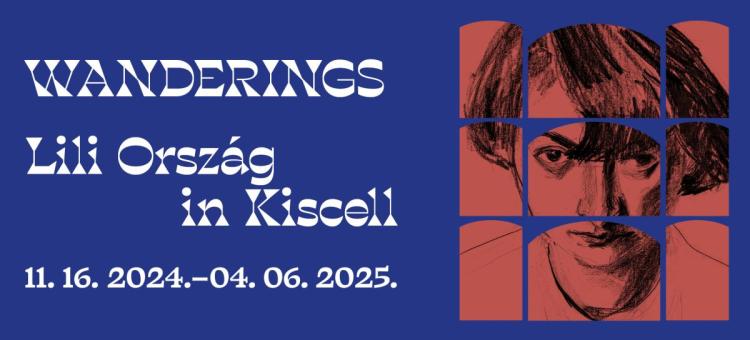- Visitor information
- About us
- Exhibitions
- Temporary Exhibitions
- Permanent Exhibitions
- Past Exhibitions
- 2024 - Light & City
- 2019-2020 - Shine! - Fashion and Glamour
- 2019 - 1971 – Parallel Nonsynchronism
- 2018 – Your Turn!
- 2018 – Still Life
- 2017 – LAMP!
- 2017 – Tamás Zankó
- 2017 – Separate Ways
- 2017 – Giovanni Hajnal
- 2017 – Image Schema
- 2017 – Miklós Szüts
- 2016 – "Notes: Wartime"
- 2016 – #moszkvater
- 2015 – Corpse in the Basket-Trunk
- 2015 – PAPERwork
- 2015 – Doll Exhibition
- 2014 – Budapest Opera House
- 2013 – Wrap Art
- 2012 – Street Fashion Museum
- 2012 – Riding the Waves
- 2012 – Buda–Pest Horizon
- 2011 – The Modern Flat, 1960
- 2010 – FreeCikli
- 2008 – Drawing Lecture on the Roof
- 2008 – Fashion and Tradition
- 2004 – Mariazell and Hungary
- Virtual museum
- What's happening?
Wanderings – Lili Ország in Kiscell
Category:

Curated by: Mária Árvai
Place: Church Hall
Curator’s Introduction
A complex relation to the past—this is what lies at the heart of Lili Ország’s art. In her oeuvre, she placed special emphasis on the relationship between history and remembrance, between processes of personal and cultural memory. Jewish historicism mixed with the sacred, memory work connected to reflection, and survivor’s guilt, which drove her to want to commemorate the victims, inspired masterpieces like Requiem (a series) and De Profundis (a triptych). The concluding piece in her body of work, Labyrinth, too, is about remembrance: she is looking back, referencing her own work, and bringing antiquity back to life in her motifs from cultural history.
Memory, as a concept, can be fruitfully applied to the rich holdings of Municipal Gallery, if on a smaller scale. The present exhibition takes a decidedly partial look at Lili Ország’s oeuvre: almost all pieces on display come from the Kiscell Museum – Municipal Gallery collection.
The exhibition comes in a series of shows exploring the museum as an institution. It examines the tangled relationship between power and art, the surreal claustrophobia of first the Rákosi then the Kádár eras, the difficulties of artistic orientation, and the compromises arising from a thirst for information. The best part of Lili Ország’s work was produced in the tiny studio flat where she lived from the time she graduated until early 1978. Its dimensions stand in stark contrast to her broad intellectual horizon, fantasy, and vast inner spaces, in which we can wander through her works. Major works are displayed in the Temple Space axis, inviting an analysis of her artistic prowess and underlining the significance of the Municipal Gallery collection; the pieces in the side rooms illuminate the creative process, with all its twists and turns.
Both the Kiscell Museum and the Temple Space are unique venues in many respects. All her life, it was Lili Ország’s dream to paint the inside of a temple. In 1960, she wrote to her friends from Tihany, “I’ve got an immense hunger for work! I just want to have at the temple walls, you couldn’t get me away from it until I’ve painted the whole thing. Well, we’ll build a temple!” For her, the “temple” was an idea more than a building. “The temple is inside, you don’t need an actual building,” she said in conversation with István Rácz, one of her first collectors, in 1964. The exhibition centres around this idea of an inner (memory) temple, presenting her mode of remembering and trauma processing, and asking questions about the responsibilities of museums as temples of art and science, as places for the preservation of the past. The exhibition space—an 18 th -century church which went through a series of transformations and was damaged in the second world war before being turned into a gallery space in 1988—reflects architecturally the themes of the paintings: construction and destruction, the intermingling of the sacred and the profane, the past as layers of time and as present.
The ongoing discussion around memory and 20 th -century history in Hungary and Europe brings Lili Ország’s work close to us.
